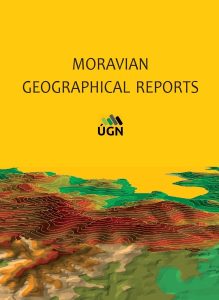 Spatial changes in the Hungarian and Slovenian cattle sector before and after accession to the European Union
Spatial changes in the Hungarian and Slovenian cattle sector before and after accession to the European Union
Imre FERTŐ, Arnold CSONKA, Štefan BOJNEC
The Moravian Geographical Reports
The Czech Academy of Sciences, Institute of Geonics
Volume 31 (2023): Issue 1 (March 2023)
Abstract
A comparative analysis of the spatial transformation of two different farm-size cattle systems, in Hungary and Slovenia, is presented in this paper. Concentration, mobility, and spatial autocorrelation measures are used to study spatial cattle-stock distribution and their changes over time, as well as spatial cattle-stock clustering using data from two agricultural censuses. Results confirm the decline in cattle stock on large-size farms in Hungary and on small-size farms in Slovenia, with a relative increase in the importance of medium-size farms in both countries. The decline and spatial changes in cattle stock are greater in Hungary than in Slovenia. Hungarian cattle clusters are concentrated in flat areas with medium- and large-size largely commercial farms, whilst in Slovenia they predominate in mainly hilly grassland and partly corn-silage areas on small and some medium-size family farms. Such specific cattle clustering is linked to geographical and farm-size structural characteristics that can also be linked to agricultural-policy-measure-related support for cattle and dairy, associated with less-favoured or disadvantaged-area status linked to geographical and structural land and farm characteristics typical of Slovenian mountain and particularly hilly areas. These spatial changes in the cattle sector have socioeconomic, land use, and environmental implications in terms of ecological sustainability and rural livelihoods.
Keywords: spatial cattle stock clustering, spatial concentration, spatial mobility, spatial autocorrelation, Hungary, Slovenia


